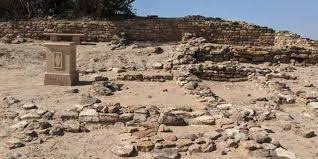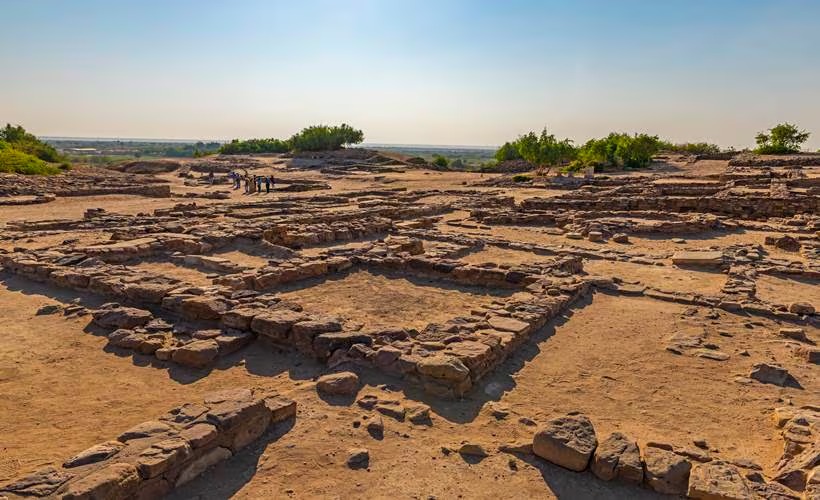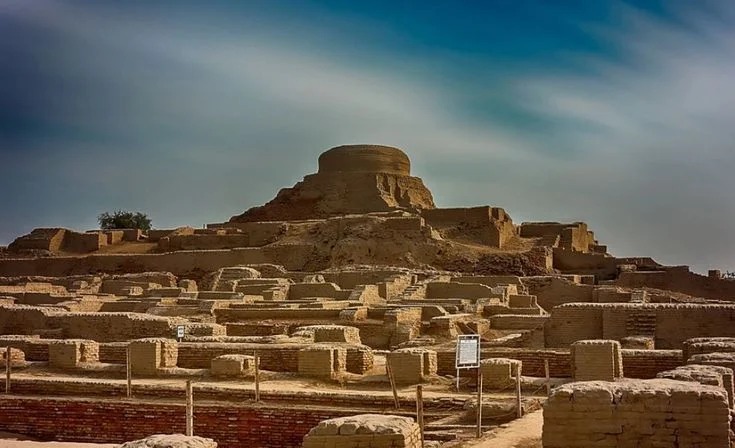Introduction
The decline of the Indus Valley Civilization, also known as the Harappan Civilization, represents a significant turning point in the history of the Indian subcontinent. This Bronze Age civilization, which flourished in the Indus River Valley and surrounding regions of modern-day India and Pakistan, commenced a process of decline around 1900 BCE. This period witnessed the gradual abandonment of major urban centers, a shift in settlement patterns, and the eventual disintegration of the characteristic features of the civilization. While the precise causes of this decline remain a subject of ongoing scholarly debate and research, various factors, including environmental changes, shifts in river systems, economic transformations, and internal social or political dynamics, are believed to have played crucial roles. The decline was not necessarily a sudden collapse but rather a prolonged period of transformation that ultimately led to the end of this highly advanced and enigmatic civilization. Understanding the reasons behind this decline is crucial for comprehending the trajectory of early human societies and the complex interplay between civilization and its environment.

Background
The Indus Valley Civilization emerged around the middle of the 3rd millennium BCE, reaching its mature phase between c. 2600 and 1900 BCE. During this period, it developed sophisticated urban centers, including Mohenjo-daro, Harappa, Dholavira, and Lothal, characterized by meticulous town planning, standardized brick architecture, advanced sanitation systems, and intricate trade networks extending to Mesopotamia and beyond. The civilization’s economy was based on agriculture, animal husbandry, and craft production, with evidence of standardized weights and measures suggesting a well-organized society. Their script remains undeciphered, adding to the mystery surrounding their culture and societal structure. The geographical extent of the Indus Valley Civilization was vast, covering a large swathe of present-day Pakistan and northwest India, making it one of the largest ancient civilizations. The period leading up to the decline, known as the Mature Harappan phase, represents the zenith of their achievements.
Theories of Decline
Several theories have been proposed to explain the decline of the Indus Valley Civilization around 1900 BCE. These theories are not mutually exclusive, and it is likely that a combination of factors contributed to this complex process.

Climate Change and Environmental Factors
A prominent theory focuses on significant environmental changes that may have impacted the Indus Valley region. Archaeological and geological evidence suggests that around this time, there might have been increased aridity and prolonged droughts. Analysis of ancient sediments and pollen records indicates shifts in monsoon patterns, potentially leading to reduced rainfall and a decline in agricultural productivity. The Indus River system, the lifeline of the civilization, may have also experienced changes in its course, impacting irrigation and water availability for the large urban populations. Furthermore, evidence suggests the drying up of the Sarasvati River, which was another important riverine system in the region. These environmental stresses could have led to food shortages, migration, and the disruption of the established urban centers.
Shifts in River Systems
The Indus Valley Civilization was heavily dependent on the Indus River and its tributaries for water resources, agriculture, and transportation. Changes in the courses of these rivers could have had devastating consequences. Some researchers suggest that tectonic activity or natural shifts led to the abandonment of certain river channels and the emergence of new ones. This could have led to the decline of settlements located along the former channels and the rise of new centers along the latter. The drying up or significant alteration of the Sarasvati River, in particular, is believed by some to have played a major role in the decline of settlements in its basin. Shifts in river systems would have disrupted agricultural practices, trade routes, and the overall economic stability of the civilization.
Decline in Trade and Economic Factors
The Indus Valley Civilization engaged in extensive trade with other contemporary civilizations, particularly in Mesopotamia. A decline in this trade could have significantly impacted their economy. Reasons for this decline could include political instability in the trading partners, the rise of alternative trade routes, or a decrease in the demand for Indus goods. Economic hardship resulting from reduced trade could have weakened the urban centers and contributed to their abandonment. Evidence suggests a decline in long-distance trade during the later phases of the Indus Valley Civilization, which might have exacerbated existing problems.
Social and Political Factors
Internal social or political factors might have also contributed to the decline. Over time, the rigid social structures or the system of governance in the Indus Valley Civilization might have become unsustainable. There is evidence of a decline in urban planning and the quality of public works in the later phases, suggesting a possible breakdown of centralized authority or administrative capacity. Some scholars speculate about potential social unrest or internal conflicts that might have weakened the fabric of the civilization. Overpopulation in the major urban centers could have also strained resources and led to social tensions.

Disease and Epidemics
While less definitively supported by archaeological evidence, the possibility of widespread epidemics cannot be entirely ruled out. Densely populated urban centers with potentially limited sanitation in certain areas could have been vulnerable to the outbreak and spread of infectious diseases. A major epidemic could have significantly reduced the population and disrupted the functioning of the society, contributing to its decline. However, concrete archaeological evidence for large-scale epidemics in the Indus Valley Civilization is still lacking.
The Aryan Invasion Theory
Historically, one of the prominent theories for the decline of the Indus Valley Civilization was the Aryan invasion theory, which posited that an influx of Indo-Aryan speakers from Central Asia around 1500 BCE led to the conquest and destruction of the Indus cities. This theory was largely based on interpretations of the Rigveda and archaeological findings such as skeletal remains found at Mohenjo-daro. However, this theory has been largely discredited by modern archaeological and linguistic research. There is little evidence of a large-scale invasion or widespread destruction dating to this period. Furthermore, the timeline of the supposed Aryan migration and the decline of the Indus Valley Civilization does not perfectly align. Most scholars now believe that the decline was a more gradual process driven by a combination of the factors mentioned above, rather than a sudden invasion. While there likely was migration and cultural interaction with groups from the northwest, it is not considered the primary cause of the civilization’s decline.
Impact and Significance
The decline of the Indus Valley Civilization had a profound impact on the region. Major urban centers like Harappa and Mohenjo-daro were gradually abandoned. There was a shift in settlement patterns, with populations likely migrating eastward and southward to smaller villages and rural areas. The distinctive urban features of the civilization, such as standardized architecture, sophisticated sanitation, and long-distance trade, gradually disappeared. This period marked a transition towards new cultural and social formations in the Indian subcontinent. While the Indus Valley Civilization did not entirely vanish, its mature urban phase came to an end, paving the way for subsequent historical developments.

Legacy
The decline of the Indus Valley Civilization remains one of the great mysteries of the ancient world. While various theories offer plausible explanations, the precise combination of factors that led to its transformation is still debated. Ongoing archaeological research and advancements in scientific analysis continue to shed light on this fascinating period. The legacy of the Indus Valley Civilization, even in its decline, highlights the complex relationship between human societies and their environment, the fragility of even the most advanced civilizations, and the continuous process of cultural change and adaptation.


Leave feedback about this